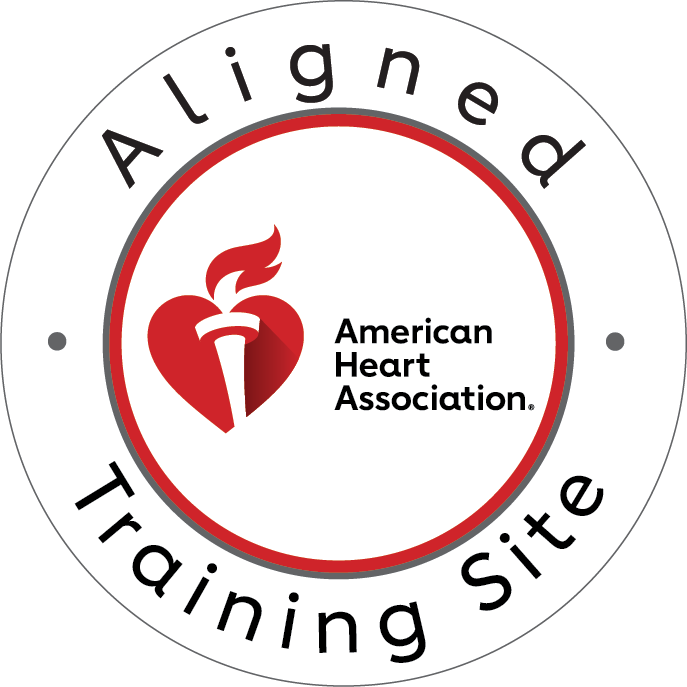In the high-stakes realm of emergency medicine, swift and effective intervention can be the difference between life and death. Advanced Cardiovascular Life Support (ACLS) stands as a cornerstone in the arsenal of medical professionals, providing structured protocols for managing cardiac emergencies with precision and expertise. Mastering ACLS algorithms is not just a matter of rote memorization; it’s about cultivating a deep understanding of the intricacies of cardiac rhythms and the appropriate interventions necessary to restore stability.
In the heart of Jacksonville, Florida, where the pulse of emergency medical training beats strong, CPR Jacksonville FL stands as a beacon of excellence. An American Heart Association training site renowned for its commitment to providing stress-free, hands-on instruction, CPR Jacksonville FL offers a range of courses including Basic Life Support (BLS) for Healthcare Providers, Pediatric Advanced Life Support (PALS), and, of course, ACLS. In this article, we delve into the essential knowledge required to master ACLS algorithms, exploring their critical role in navigating the complex terrain of cardiac emergencies.
Understanding the ACLS Algorithms
ACLS algorithms serve as navigational guides in the tumultuous waters of cardiac emergencies, providing a structured framework for healthcare providers to follow in high-pressure situations. These algorithms are meticulously designed to address various cardiac rhythms and clinical scenarios, offering step-by-step instructions for assessment, intervention, and treatment.
At the core of ACLS algorithms lies the fundamental principle of timely and appropriate intervention. Whether faced with a patient in ventricular fibrillation (VF), pulseless ventricular tachycardia (pVT), asystole, or any other life-threatening arrhythmia, healthcare providers must act decisively and effectively to maximize the chances of a positive outcome.
Understanding ACLS algorithms involves more than just memorizing a series of steps; it requires a deep comprehension of the underlying pathophysiology and the rationale behind each intervention. By grasping the mechanisms driving various cardiac rhythms and the pharmacological and non-pharmacological interventions aimed at restoring normal cardiac function, healthcare providers can make informed decisions in real time, even amidst the chaos of an emergency.
Moreover, ACLS algorithms emphasize the importance of teamwork and communication in the clinical setting. In a resuscitation scenario, effective coordination among healthcare providers is essential for optimizing patient outcomes. By adhering to standardized algorithms and protocols, teams can ensure a synchronized and cohesive approach to patient care, minimizing errors and maximizing efficiency.
Basic Life Support (BLS) Refresher
Before delving into the intricacies of ACLS algorithms, it’s crucial to reinforce the foundation upon which advanced cardiac life support is built: Basic Life Support (BLS). BLS comprises the fundamental techniques used to sustain life in individuals experiencing cardiac arrest or respiratory failure before the initiation of advanced interventions.
At its core, BLS emphasizes the ABCs: Airway, Breathing, and Circulation. Ensuring a clear and patent airway, providing adequate ventilation, and maintaining circulation through chest compressions are paramount in the early stages of resuscitation. Mastery of BLS techniques is essential for providing immediate assistance to patients in distress and lays the groundwork for subsequent ACLS interventions.
Integration of BLS principles with ACLS algorithms is seamless, with BLS techniques forming the initial steps in the management of cardiac emergencies. Effective chest compressions and high-quality CPR serve as the cornerstone of resuscitation efforts, facilitating adequate oxygen delivery to vital organs and preserving neurological function.
Moreover, proficiency in BLS enables healthcare providers to quickly identify the need for advanced interventions and transition seamlessly into ACLS protocols when necessary. By establishing a solid foundation in BLS, healthcare providers can approach ACLS scenarios with confidence, knowing that they possess the skills to initiate life-saving measures promptly.
Ventricular Fibrillation and Pulseless Ventricular Tachycardia (VF/pVT) Algorithm
When confronted with a patient in ventricular fibrillation (VF) or pulseless ventricular tachycardia (pVT), time is of the essence. These malignant arrhythmias represent immediate threats to life, requiring prompt intervention to restore cardiac function and perfusion.
The Ventricular Fibrillation and Pulseless Ventricular Tachycardia Algorithm provides a systematic approach to managing these life-threatening rhythms, emphasizing rapid defibrillation as the cornerstone of treatment. The algorithm is divided into sequential steps, guiding healthcare providers through the critical actions required to maximize the chances of successful resuscitation.
- Assessment and Confirmation: The algorithm begins with the assessment of the patient’s rhythm, typically conducted through cardiac monitoring or defibrillator pads. If the rhythm is determined to be VF or pVT, prompt confirmation is essential to initiate appropriate interventions.
- Immediate Defibrillation: Without delay, healthcare providers should deliver a shock using a defibrillator set to the appropriate energy level (e.g., 120-200 joules for biphasic defibrillators). Defibrillation aims to depolarize the myocardium and interrupt the chaotic electrical activity, allowing the heart to re-establish an organized rhythm.
- CPR and Basic Life Support: Following defibrillation, high-quality CPR should be initiated immediately. This includes chest compressions at a rate of 100-120 per minute, ensuring adequate depth and recoil. Simultaneously, healthcare providers should provide oxygenation and ventilation through bag-mask ventilation or advanced airway management.
- Assessment and Reanalysis: After two minutes of CPR, the rhythm should be reassessed. If VF or pVT persists, another shock should be administered. If the rhythm has converted to a perfusing rhythm, providers should continue to monitor and support the patient’s cardiovascular status.
- Epinephrine and Antiarrhythmic Medications: Alongside CPR, pharmacological interventions play a crucial role in managing VF/pVT. Providers should administer epinephrine every 3-5 minutes to support myocardial perfusion and consider the early administration of antiarrhythmic medications such as amiodarone or lidocaine.
- Advanced Interventions: In refractory cases of VF/pVT, advanced interventions such as advanced airway management, intravenous access, and extracorporeal membrane oxygenation (ECMO) may be necessary to optimize outcomes.
By adhering to the Ventricular Fibrillation and Pulseless Ventricular Tachycardia Algorithm, healthcare providers can effectively navigate the complexities of cardiac arrest due to these malignant arrhythmias, maximizing the chances of successful resuscitation and improving patient outcomes.
Asystole and Pulseless Electrical Activity (PEA) Algorithm
While ventricular fibrillation and pulseless ventricular tachycardia demand immediate defibrillation, the absence of a discernible rhythm pulse or a flatline on the monitor presents a different challenge. Asystole and pulseless electrical activity (PEA) represent profound cardiac dysfunction requiring a systematic approach to resuscitation.
The Asystole and Pulseless Electrical Activity Algorithm provides a structured framework for managing these non-shockable rhythms, focusing on identifying reversible causes and implementing appropriate interventions to restore cardiac activity.
- Assessment and Confirmation: Similar to VF/pVT, the algorithm begins with the assessment of the patient’s rhythm. If asystole or PEA is identified, providers should confirm the absence of a pulse and verify the rhythm through cardiac monitoring or defibrillator pads.
- CPR and Basic Life Support: Unlike VF/pVT, defibrillation is not indicated for asystole or PEA. Instead, high-quality CPR should be initiated immediately, with a focus on adequate chest compressions and ventilation to maintain oxygenation and circulation. Basic life support interventions, including airway management and oxygen administration, are essential components of resuscitation efforts.
- Identify and Treat Reversible Causes: In parallel with CPR, providers should systematically assess and address reversible causes contributing to asystole or PEA. These may include hypoxia, hypovolemia, hypothermia, hyperkalemia, tension pneumothorax, cardiac tamponade, and toxic/metabolic disturbances. Prompt intervention to correct these underlying factors can improve the likelihood of successful resuscitation.
- Epinephrine Administration: In addition to CPR and addressing reversible causes, providers should administer epinephrine every 3-5 minutes to support myocardial perfusion and systemic vascular tone. Epinephrine bolsters cardiac contractility and enhances coronary perfusion, albeit with variable efficacy in non-shockable rhythms.
- Advanced Interventions: In refractory cases of asystole or PEA, advanced interventions such as advanced airway management, intravenous access, and the consideration of extracorporeal life support (ECLS) may be necessary to optimize outcomes.
By following the Asystole and Pulseless Electrical Activity Algorithm, healthcare providers can systematically approach the management of non-shockable cardiac rhythms, prioritizing high-quality CPR, identifying and addressing reversible causes, and administering appropriate pharmacological interventions to improve the chances of successful resuscitation.
Bradycardia Algorithm
While ventricular arrhythmias like VF and pVT demand rapid intervention, bradycardia presents a different challenge. Bradycardia, defined as a heart rate of less than 60 beats per minute, can manifest with varying degrees of clinical significance, ranging from asymptomatic to hemodynamically unstable.
The Bradycardia Algorithm offers a systematic approach to managing bradycardic rhythms, with a focus on identifying the underlying etiology and implementing appropriate interventions to optimize cardiac output and perfusion.
- Assessment and Clinical Evaluation: The algorithm commences with a comprehensive assessment of the patient’s clinical status, including vital signs, symptoms, and cardiac rhythm. Providers should evaluate the patient’s level of consciousness, blood pressure, and signs of inadequate perfusion such as altered mental status, hypotension, or signs of shock.
- Determine the Etiology: Bradycardia can arise from various etiologies, including intrinsic cardiac conduction abnormalities, medication effects, electrolyte disturbances, and structural heart disease. Providers should identify potential reversible causes and risk factors contributing to the bradycardic rhythm.
- Symptomatic vs. Asymptomatic Bradycardia: The algorithm distinguishes between symptomatic and asymptomatic bradycardia to guide management decisions. Symptomatic bradycardia, characterized by signs of hemodynamic instability such as altered mental status, hypotension, or signs of shock, necessitates immediate intervention. Asymptomatic bradycardia may warrant observation and further evaluation to determine the need for intervention.
- Initiate Basic Interventions: For symptomatic bradycardia, basic interventions should be initiated promptly to improve cardiac output and tissue perfusion. These may include oxygen administration, positioning the patient to optimize venous return, and intravenous fluid resuscitation if hypovolemia is suspected.
- Atropine Administration: In cases of symptomatic bradycardia refractory to basic interventions, atropine administration may be indicated. Atropine, an anticholinergic medication, increases heart rate by blocking vagal tone and enhancing sympathetic activity. The recommended dose is 0.5 mg IV bolus, with repeat doses every 3-5 minutes as needed, up to a maximum total dose of 3 mg.
- Transcutaneous Pacing: If bradycardia persists despite atropine administration, transcutaneous pacing may be considered as a temporizing measure to augment heart rate and improve hemodynamic stability. Transcutaneous pacing involves the application of electrical impulses through pads placed on the patient’s chest, stimulating myocardial depolarization and increasing heart rate.
- Consultation and Advanced Interventions: In cases of refractory bradycardia or hemodynamic instability, consultation with cardiology or electrophysiology specialists is warranted. Advanced interventions such as transvenous pacing or pharmacological agents (e.g., dopamine, epinephrine) may be necessary to optimize cardiac output and perfusion.
By adhering to the Bradycardia Algorithm, healthcare providers can systematically approach the management of bradycardic rhythms, tailoring interventions to the patient’s clinical presentation and hemodynamic status. Through prompt recognition, targeted interventions, and collaboration with multidisciplinary teams, providers can optimize outcomes for patients experiencing bradycardia in emergency settings.
Tachycardia Algorithm
Tachycardia, characterized by a heart rate greater than 100 beats per minute, presents a broad spectrum of clinical scenarios ranging from benign sinus tachycardia to life-threatening arrhythmias. Managing tachycardic rhythms requires a systematic approach to identify the underlying etiology and implement appropriate interventions to restore normal sinus rhythm and optimize hemodynamic stability.
The Tachycardia Algorithm provides a structured framework for managing both stable and unstable tachycardic rhythms, guiding healthcare providers through a series of steps aimed at rapid identification, assessment, and intervention.
- Assessment and Clinical Evaluation: The algorithm begins with a thorough assessment of the patient’s clinical status, including vital signs, symptoms, and cardiac rhythm. Providers should evaluate the patient’s level of consciousness, blood pressure, signs of inadequate perfusion, and associated symptoms such as chest pain, dyspnea, or syncope.
- Differentiate Stable vs. Unstable Tachycardia: Tachycardia can present with varying degrees of hemodynamic instability. Providers must differentiate between stable and unstable tachycardia to guide management decisions. Unstable tachycardia is characterized by signs of hemodynamic compromise such as hypotension, altered mental status, chest pain, or signs of shock, necessitating immediate intervention. Stable tachycardia may be managed with a more cautious approach and further diagnostic evaluation.
- Assess for Underlying Etiology: The algorithm emphasizes the importance of identifying and addressing the underlying etiology driving the tachycardic rhythm. Common causes of tachycardia include supraventricular arrhythmias (e.g., atrial fibrillation, atrial flutter, paroxysmal supraventricular tachycardia), ventricular arrhythmias, electrolyte disturbances, hemodynamic stressors, and medication effects.
- Vagal Maneuvers and Adenosine: For stable narrow-complex tachycardia consistent with supraventricular origin, vagal maneuvers such as carotid sinus massage, Valsalva maneuver, or facial immersion in ice-cold water may be attempted to transiently slow heart rate. If vagal maneuvers are ineffective or contraindicated, intravenous adenosine may be administered as a first-line pharmacological agent. Adenosine transiently blocks atrioventricular nodal conduction, interrupting reentrant pathways and restoring normal sinus rhythm. The initial dose is typically 6 mg rapid IV push, followed by a rapid saline flush and higher doses if necessary.
- Cardioversion: For unstable tachycardia or tachycardia refractory to pharmacological interventions, synchronized cardioversion is indicated to restore normal sinus rhythm and improve hemodynamic stability. Cardioversion involves delivering a synchronized electrical shock to terminate the arrhythmia while minimizing the risk of inducing ventricular fibrillation. The energy level is titrated based on the specific rhythm and patient characteristics, typically starting at 50-100 joules for narrow-complex tachycardia and 100-200 joules for wide-complex tachycardia.
- Antiarrhythmic Therapy: In cases of recurrent or refractory tachycardia, antiarrhythmic medications such as beta-blockers, calcium channel blockers, or amiodarone may be initiated to prevent recurrence and stabilize heart rate. The choice of medication depends on the underlying rhythm, the patient’s hemodynamic status, and comorbidities.
- Further Evaluation and Management: Following successful intervention, providers should conduct a comprehensive evaluation to identify and address underlying precipitating factors contributing to the tachycardic rhythm. Further diagnostic studies such as electrocardiography, echocardiography, laboratory testing, and telemetry monitoring may be indicated to guide ongoing management and risk stratification.
By following the Tachycardia Algorithm, healthcare providers can systematically approach the management of tachycardic rhythms, tailoring interventions to the patient’s clinical presentation, hemodynamic stability, and underlying etiology. Through prompt recognition, targeted interventions, and multidisciplinary collaboration, providers can optimize outcomes for patients experiencing tachycardia in emergency settings.
Post-Cardiac Arrest Care
The resuscitation of a patient from cardiac arrest marks the beginning of a critical phase in their care. Post-cardiac arrest care focuses on optimizing neurological recovery, preventing secondary organ injury, and addressing the underlying causes of the arrest to minimize the risk of recurrence.
The Post-Cardiac Arrest Care Algorithm provides a structured approach to managing patients following successful resuscitation, incorporating elements of neurological assessment, hemodynamic support, targeted temperature management, and diagnostic evaluation.
- Immediate Post-Resuscitation Care: Following the return of spontaneous circulation (ROSC), providers should prioritize the assessment and stabilization of the patient’s vital signs. Hemodynamic support, including fluid resuscitation and vasopressor administration, may be necessary to maintain adequate perfusion and oxygenation.
- Neurological Assessment: Neurological assessment is a cornerstone of post-cardiac arrest care, as neurological injury is a common complication following cardiac arrest. Providers should conduct a systematic evaluation of the patient’s level of consciousness, pupillary response, motor function, and neurological reflexes. Tools such as the Glasgow Coma Scale (GCS) and pupillary light reflex assessment may aid in neurological assessment and prognostication.
- Targeted Temperature Management: Targeted temperature management (TTM) is a critical component of post-cardiac arrest care aimed at minimizing neurological injury and improving outcomes. Providers should initiate TTM as soon as feasible following ROSC, targeting a goal temperature of 32-36°C for 24-48 hours. TTM can be achieved through various methods, including surface cooling devices, intravascular cooling catheters, and cold intravenous fluids.
- Diagnostic Evaluation: Following stabilization and initiation of TTM, providers should conduct a comprehensive diagnostic evaluation to identify and address the underlying causes of the cardiac arrest. This may include electrocardiography, cardiac biomarker testing, echocardiography, coronary angiography, and other relevant studies to assess cardiac function, identify ischemic or structural abnormalities, and guide ongoing management.
- Optimization of Organ Function: In addition to neurological assessment and targeted temperature management, providers should focus on optimizing organ function and preventing secondary organ injury. This may involve monitoring and support of respiratory function, renal function, and hemostasis, as well as early initiation of goal-directed therapy to optimize tissue perfusion and oxygen delivery.
- Multidisciplinary Collaboration and Prognostication: Post-cardiac arrest care requires close collaboration among multidisciplinary teams, including emergency medicine, critical care, cardiology, neurology, and other specialties. Providers should engage in ongoing communication and collaboration to optimize patient care and facilitate shared decision-making regarding prognosis and goals of care.
By following the Post-Cardiac Arrest Care Algorithm, healthcare providers can systematically approach the management of patients following successful resuscitation from cardiac arrest, focusing on neurological recovery, organ support, and comprehensive diagnostic evaluation. Through timely intervention, multidisciplinary collaboration, and patient-centered care, providers can improve outcomes and enhance the quality of life for survivors of cardiac arrest.
Conclusion
In the high-stakes world of emergency medicine, proficiency in CPR and ACLS algorithms can mean the difference between life and death. With cardiac emergencies occurring unpredictably and frequently, being prepared to respond effectively is paramount.
CPR Jacksonville FL stands as a beacon of excellence in CPR and ACLS certification, offering comprehensive courses that equip healthcare providers with the knowledge and skills necessary to navigate emergencies with confidence and competence. Whether you’re a seasoned healthcare professional seeking recertification or an individual looking to learn lifesaving skills for the first time, CPR Jacksonville FL provides stress-free, hands-on training that empowers you to make a difference in critical moments.
By enrolling in CPR certification and ACLS certification courses at CPR Jacksonville FL, you not only invest in your professional development but also contribute to the safety and well-being of your community. With keywords like CPR certification Jacksonville FL and ACLS certification Jacksonville FL, you can easily find the best training site in Jacksonville, Florida, that prioritizes quality education, practical skills application, and compassionate care.
Don’t wait until an emergency strikes. Take the proactive step to enroll in CPR and ACLS certification courses today with CPR Jacksonville FL. Together, we can make a lifesaving difference when it matters most.




